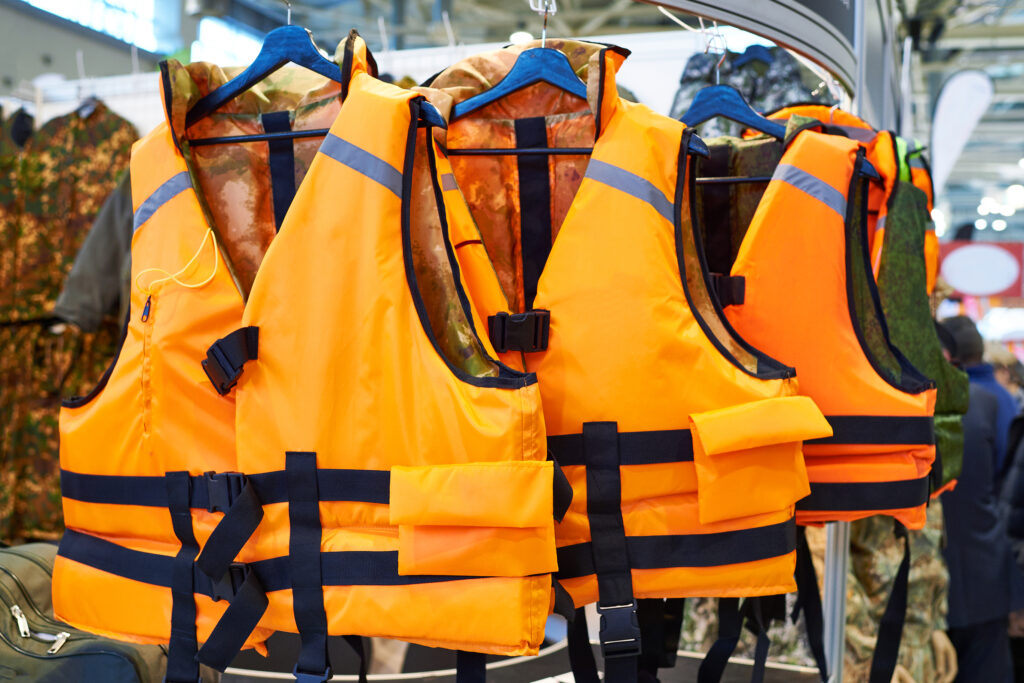Let’s face it, you’re never totally safe no matter where you are or what you’re doing. We’ve all seen TV stories about cars crashing into restaurants or building collapses in Florida. That being said, there are certain common sense precautions we can all take when venturing out on the river.
The first and most important step for personal safety when out on the river is to wear your PFD (personal floatation device). This is especially important if you are a weak swimmer, or if the river is high with a strong current, or if the river water is cold. Coast Guard regulations require there to be at least one PFD for each individual in your watercraft, and children under the age of 13 are required to wear their PFD the whole time while out on the water. Make sure your PFD is the right size and fits properly by trying it on before venturing forth. Most PFD’s are categorized by the participants weight from: UNDER 50 pounds, 50 to 90 pounds, and OVER 90 pounds.

Weather is another important factor when planning on being outside for a good part of the day. If it is early or late season, be prepared to guard against hypothermia. Choose clothing that wicks moisture to help keep you warm even when wet such as polypropylene, polyester, nylon, wool, or silk. In reality, most of our clothing like jeans, hoodies, and sweatshirts is made from cotton. Cotton absorbs moisture and will not keep you warm when wet, so avoid cotton. And if you do end up in the water in the off season, get out of cold water as fast as you can. Cold water will rapidly sap all your strength and leave you helplessly floating in your PFD. A good rule of thumb is have a minimum of three watercraft when paddling in the cold.
Weather, of course, can be fickle with the sudden approach of a summer thunderstorm spouting dangerous lightning and strong winds. Be aware of what’s going on around you and pull off the river before the storm hits. Seek as clear a spot as you can find and avoid tall trees if possible. Pull the watercraft well up off the river, flip it over and crawl underneath. These summer storms usually blow through fairly quickly and you should be on your way again within an hour or so.
And beware of dehydration which can sneak up on you and cause heat exhaustion or even heat stroke. Bring plenty of water and sport drinks to keep yourself hydrated. Be advised beer and alcohol in general has the opposite effect by causing dehydration and worse. In fact, alcohol consumption on the river is just a bad idea. The effects are exasperated by the hot sun and your judgement is compromised. Leave the bottled fun for after the run, and make the drive home safe and sober.
Save yourself from days of agony and sleepless nights by protecting yourself against sunburn. Use at least 30 SPF sunscreen liberally applied. Don’t forget the top of your head, your nose, your knees, and the tops of your feet (the second worst place to get sunburned). Remember, old sunscreen goes bad and becomes ineffective. Look for an expiration date (often molded into the bottom seal of the tube), apply at least 20 minutes before exposure, and reapply every couple of hours or so.
Proper foot protection is another important aspect of river adventuring. The bottom of the Shenandoah River is rocky and may contain not only sharp rocks but occasional broken glass or metal bits. You may not be able to properly treat a lacerated foot for hours thus increasing the possibility of developing a nasty infection. Protect you feet by wearing an old pair of sneakers or a proper river shoe with a covered toe. Flip flops are totally inadequate and bare foot is out of the question.
